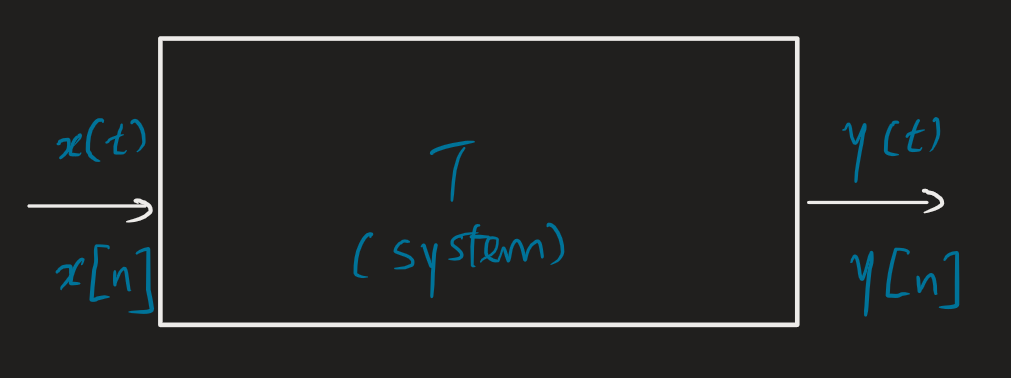In electrical engineering, a system is a transform that maps an input signal to another signal (an output signal). We say that if is the input signal, is the output signal, and is the transform that describes the system, then:
 The value of the signal at a particular time is given by . We can broadly divide systems into those that are linear and non-linear, and time-invariant and time-varying systems. Linear time-invariant (LTI) systems are pretty important, because many systems are LTI.
The value of the signal at a particular time is given by . We can broadly divide systems into those that are linear and non-linear, and time-invariant and time-varying systems. Linear time-invariant (LTI) systems are pretty important, because many systems are LTI.
Continuous-time systems often model physical phenomena. Discrete-time systems follow the theory of CT systems closely. They are the result of engineering processes: like the discretisation of CT systems, digital signal processing, or financial/economic models.
Basic theory
We can define CT/DT systems with a pointwise definition, i.e., we give a formula for in terms of all input signal values — this gets us an explicit formula for the output.
DT systems can often also be described in terms of a recursive expression. We can still sometimes express it in a pointwise manner but
Systems may have the following properties:
- Linearity
- Time invariance
- Causality
- Invertibility (not sure if systems are considered maps)
- Stability
Systems design
Systems can be interconnected to create larger systems. Common interconnections include series, parallel, and feedback configurations.
We may be able to design some sub-systems, but not all — but we must understand those that we don’t design to make good decisions, i.e., what frequency may be best to transmit. Broadly systems can be achieved in a few ways, principal of which are circuits (analogue or digital).
Courses
See also
- Similarly-named concepts